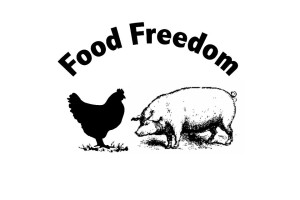Folks who want to make food in their home or garage and sell it are part of a growing business segment. By many accounts, the cottage food industry is growing in North America. The county extension agents I support are fielding an increased number of questions of how to break into the food industry in the past year. The situation in other states is apparently similar.
Twenty U.S. states allow certain foods to be processed in the home and sold for consumption – but it’s a patchwork of regulatory approaches. In some states, the entire process is deregulated for certain exempt products. These products usually are limited to direct-selling (at a farmers’ market or roadside stand) of baked goods, jams and jellies.
Last year Colorado jumped into cottage food rules including a requirement for small business folks to take a mandatory food handling course for foods deemed to be low risk (jellies, breads, etc).
In 2010 Michigan also adopted a new law allowing for home-based food production. In the absence of inspection, the law requires each item to have a label saying it was produced in an uninspected home kitchen, listing the food’s ingredients and any known allergens, and includes the producer’s name and address.
The cottage foods discussion has also popped up in Wyoming with a turn towards leafy greens and cut fruit processing, similar to discussions in North Carolina in April 2012.
From the Star-Tribune:
“People in Wyoming are concerned with food safety,” state Rep. Sue Wallis, R-Recluse said. “Many want to buy locally.”The problem is, according to Wyoming Department of Agriculture spokesman Derek Grant, unregulated processing of locally produced products, such as chopped lettuce or cantaloupe, increases the chances of contamination.One proposed rule allows farmers to sell leafy greens at a farmers market, for example, as long as they are not in a bag. If the greens are cut and placed in a bag, they are considered cut leafy greens and producers must meet sanitation requirements and obtain a license to sell them.Wallis said farmers in Jackson Hole have been selling bagged greens to local restaurants at the restaurants’ request.If the rule change is adopted, farmers will have to invest in a certified kitchen, with equipment to meet department requirements for cleaning the greens.
While it might not be a current followed regulation, it’s best practice to manage cut leafy greens (things like shredded lettuce, etc) like a high risk food, processed in a clean environment, and the end product kept at refrigeration temperatures. Following over 20 multi-state outbreaks between 1998 and 2008, ‘cut leafy greens’ was added to the definition of potentially hazardous food requiring time-temperature control for safety (TCS) in the U.S. FDA Model Food code.
Storage and transport time and temperature are contributing factors for pathogen growth in cut leafy greens; water and nutrient availability, along with a suitable pH create an environment to support the growth of lots of foodborne bacteria. This is similar for other cut/minimally processed fruits and vegetables like melons, tomatoes and sprouts.
In response to cottage food excitement, our friends at the Association of Food and Drug Officials (AFDO) have released a guidance document (unfortunately it’s not free) defining the types of foods that should fall under cottage food exemptions, and those, like cut fruits and vegetables, which should require some sort of commercial facility.
The scope of these guidelines is comparable to those accepted practices currently recognized in several states and represents a consensus opinion of AFDO members. AFDO believes that adopting and implementing these guidelines, where there is little or no oversight of such activities, can eliminate a void in the national goal of a seamless food safety and security system
The guidance document can be found at http://www.afdo.org/publications.
Having a mandatory food handler course for exempt processors, like Colorado does, based on the AFDO guidance document, might help avoid the sometimes tragic outbreaks.
 This might not be the best way to make food safety rules.
This might not be the best way to make food safety rules.
